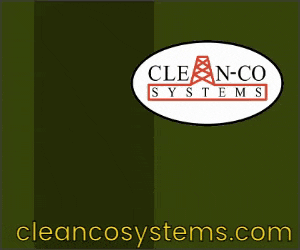Air-cooled condensers (ACCs), like their water-cooled (WCC) cousins, get little respect from plant personnel. These heat exchangers typically are viewed as being of secondary importance compared to the steam turbine/generators they serve. They certainly are not eye candy. The most popular version of the former looks like a huge elevated stage with spindly legs, the latter may be described best as a steel box filled with thousands of small-diameter tubes. Both are just kind of “there.” A pet rock comes to mind.
And what could go wrong with either? Not much, compared to the steam turbine/generators and most other plant equipment. But remember that a healthy condenser is critical to achieving top Rankine cycle efficiency and maximum profit. This puts condensers under the watchful eye of the financial folks.
Powerplant O&M staffs are most familiar with WCCs and much has been written about how to keep them at peak performance. For a short refresher, look back at the work done by your colleagues at Talen Energy’s Nueces Bay and Barney M Davis Energy Centers to earn one of CCJ’s 2017 Best of the Best (Practices) Awards.
Much less has been published on how to squeeze more performance from ACCs. One reason: There are far fewer ACCs than there are WCCs, hence the funds available to support product improvement have been somewhat limited to date. NV Energy believed dry cooling technology could be advanced at an affordable cost by fostering collaboration among owner/operators of ACC-equipped powerplants and it launched the ACC Users Group nine years ago with assistance from the editors of CCJ and CCJ ONsite.
The library of presentations from the organization’s meetings available on its website may be the most comprehensive collection of technical material on ACCs available publicly.
The ninth annual meeting of the ACC UG, held Oct 3 – 5, 2017 in Las Vegas, featured specifics of performance issues and measurements, equipment challenges and solutions, system chemistry, and design details that could be discussed and shared among users, engineering firms, equipment suppliers, and academics, and taken home for the benefit of operating plant personnel, owner/operators, and researchers. CCJ ONsite’s Consulting Editor Steve Stultz filed the following report; his coverage continues in the next issue of this letter.
Looking back over the years to the first meeting in 2009, the editors opined about what they viewed as a quantum leap in technology from then to now. Also, that because of water’s generally much higher value in areas outside the US, technology improvements—such as those to improve fan performance, mitigate gearbox issues, etc—are coming from places like South Africa, Morocco, Italy, Germany, Netherlands, and Spain.
Performance improvement. Huub Hubregtse of Netherlands’ ACC Team talked about the need for good operational data on heat transfer, fans, leak rate, etc, to decide what modifications or adjustments might be required to achieve top performance of the heat rejection system. He stressed the value of engineering expertise to for interpreting the data.
The plant DCS records turbine backpressure, steam temperature at the turbine exhaust, condensate temperature, extraction temperature, steam flow, and ambient temperature at the weather station. With this information, Hubregtse continued, the performance calculation method (a thermal design model) can calculate turbine backpressure as it should be. When compared with actual or historical backpressure, differences indicate either performance loss or performance improvement.
He went on to say that fan-performance determination requires the following data:
-
- Actual air flow from the fan.
- Static pressure in the plenum.
- Static pressure at the suction side of the fan.
- Fan power.
Air-side performance is evaluated based on the temperature rise of the coolant across the finned heat-exchanger tubes. The hot air temperature is commonly measured at the outlet of the bundles (50 positions). Air flow should be measured from the fan bridge in at least four directions.
Hubregtse also discussed the adverse impact of air in-leakage on ACC performance and stressed the need to inspect for leaks and eliminate them. He said performance losses of up to 10% have been attributed to in-leakage.
ACC fouling has two effects, he added. First, air flow is restricted, resulting in a higher static pressure than the original design. Second, the heat-transfer coefficient of the finned tubes is reduced by insulation layers (fouling) on the surface. Thus, ACC performance tests should be made after tube cleaning.
Details on air in-leakage at three ACCs in Mexico and two in the UK were provided by InterGen’s Oscar Hernandez, a member of the user group’s steering committee. At one plant in Mexico, instrumentation detected a change in the dissolved-oxygen concentration leading to repair of a spray nozzle. In another, dissolved oxygen again triggered an investigation leading to the finding of a steam-turbine gland seal out of position. For both, credit was given to accurate online instrumentation and continuous chemistry monitoring.
A lengthy list of key indicators beyond chemical parameters was reviewed, highlighting such items as increase in backpressure, decrease in condensate temperature, and loss of ACC vacuum. This was followed by a list of common air in-leakage sources including missing hardware, penetrations, welds, turbine shaft seals, expansion joints, pump seals, manways, and valves. Thermal imaging was recommended, looking for black spots.
Structural Integrity’s Barry Dooley, a member of the ACC UG steering committee mentioned that IAPWS is reviewing the subject of air in-leakage for one of the organization’s Technical Guidance Documents planned for 2018. Dooley is executive secretary of the international body of experts.
Tube cleaning technology has advanced significantly over the last decade. AX Systems’ Romain Pennel presented on an automated cleaning system developed by the French company. His case study for a small waste-to-energy plant in the UK equipped with two A-frame ACCs illustrated the value of cleaning. Output had decreased by 3 MW before cleaning reclaimed most of that loss.
Pennel began with an overview of fouling mechanisms, showing how they create an isolation film and limit air flow through the fins, thereby reducing heat transfer. This includes fouling from the natural environment (such as pollen or sand) and from industrial sources (fiber, dust, and oil). The result: Reductions in vacuum, turbine steam flow, and power generation.
ACC configurations and challenges covered by the presenter included flat, A-frame, and V-frame. Examples of what not to do with regard to external cleaning of heat-transfer surfaces included the following:
-
- Don’t use manual high-pressure spray equipment: It’s easy to bend fins when the spray head is not perpendicular to the tube surface.
- Avoid sandblasting. Risks include fin damage and removal of any tube coating—aluminum, for example.
- Say “no” to use of a bicarbonate solution for cleaning. Risk is the electrolysis effect between aluminum and NaHCO
EPRI’s Andy Howell, chairman of the user group’s steering committee, followed Pennel with a status report on the users group’s tube-cleaning guidance document, “Finned-tube heat exchanger tube cleaning.” The chemist reviewed an outline of ACC.02, which covers operational factors limiting ACC efficiency (such as ambient temperature and degree of external tube fouling), cleaning frequency, foulant removal using water, air, and dry ice, and much more.
He urged all attendees to participate in the development of the document with suggestions, reviews, and comments.
Of fans and wind. Failure to meet performance expectations often can be traced to wind effects and fan issues—such as marginal design, in both cases. Ockert Augustyn of Eskom, South Africa’s largest utility (produces about 95% of the country’s electricity), discussed operating performance of the world’s largest ACC at Medupi Power Station. It will be home to six 794-MW steam units; three were operating at the time of the meeting.
Eskom operates large ACCs at four multi-unit installations. Fans measuring 30 ft in diameter number between 48 and 64 per condenser; platform heights range from 145 to 195 ft. Water restrictions dictate use of ACCs.
Augustyn stressed that all ACC performance requirements are specified by the purchaser; the supplier is responsible for compliance and design. However, he pointed out that the supplier can be at an advantage because performance testing is not conducted at high-wind conditions.
Augustyn noted these risks for the purchaser: A supplier might be reluctant to add safety margins or other features that would make its offering less competitive, and the purchaser may not be able to disqualify offers or justify higher costs if all suppliers meet the specification. More important, performance characteristics in windy conditions are essentially unknown until after commissioning—too late for design changes.
Because most suppliers are in compliance with specifications, the advantage is theirs, and the purchaser needs to be knowledgeable of all potential risks and limitations.
Operational experience at Eskom shows there can be significant capacity loss during adverse weather conditions (high temperature and high wind speed, in particular). At the utility’s older Matimba site, CODs of its six 665-MW units extended from 1988 to 1993. A dozen vacuum-related unit trips attributed to wind occurred during the first seven years of operation. In 2016 alone, there were multiple cases of load losses exceeding 1000 MW.
Planning for Medupi drew upon Eskom’s experience at Matimba and its other plants:
-
- Atmospheric conditions were based on 130-ft elevation above grade.
- Design wind speed was 20 mph in any direction.
- Wind-wall height was extended to the top of the steam duct.
- An 8-ft-wide solid walkway was placed around the entire platform perimeter (for maintenance work, but also to reduce hot air recirculation).
- Wind cross on ground level was 33% of fan inlet height.
- Performance guarantees were verified by CFD before construction.
Also required was an increased gap between the ACC and turbine building. At Matimba, the two structures kissed, at Medupi they were 165 ft apart. Plus, the at-grade wind walls at Medupi were extended from Matimba’s 33 ft to 47 ft. Augustyn explained: “We went with what we knew, then made things stronger and bigger.”
The first unit at Medupi entered commercial operation in October 2015 and has experienced no vacuum-related load losses. ACC performance comparisons of Medupi and Matimba benefit from the close proximity of the two plants.
Wind screen design. Cosimo Bianchini, of Italy’s Ergon Research, shared his knowledge on the use of CFD analysis for optimal wind-screen positioning. He captured the attention of attendees with this factoid: Wind’s impact on the ACC is significant, reducing net power by 10% or more for each 22 mph of wind speed. Two common sources of wind-induced ACC losses, he continued, are fan performance degradation and recirculation of hot air into downwind fan inlets.
Bianchini went on to describe his overall modeling strategy with detail befitting a CFD specialist. He pointed out one of the advantages of modeling: The ability to test variations. In this case, 11 mitigation devices (screen plans) were tested by combining various suspended and ground-up designs. The optimal configuration, a compromise between performance and cost, was the cruciform fabric screen (30% open area) and suspended vertical screens around the ACC walls.
The conclusions: Wind screens can mitigate wind losses, showing a gain of up to 14% at 22 mph. This recovery factor starts decreasing at intermediate wind speeds. Actual flow rate depends on wind-screen configuration, wind speed, and wind direction.
Efficient fan design. Augustyn returned to the podium to discuss the “learning experience” for Eskom at Matimba. The plant had suffered historic losses in windy months but the utility’s engineering team concluded it was not economically feasible to reduce them entirely. Typical annual production from the plant is 24,000 GWh. Vacuum-related losses in 2016 totaled 350,000 MWh, or less than 1.5% of total production.
Eskom initiated its loss-mitigation efforts with a thorough review of previous CFD work, including placement of wind screens. This led to a detailed look at fan performance.
Aerodynamic design was reviewed with CFD, keeping the same duty point. Static efficiency was set at 60%, and a steep curve was established to protect against wind.
South Africa’s Stellenbosch Univ was invited to participate in the study and a consortium was established to design, manufacture, install, and commission a high-efficiency 30-ft-diam fan. Consortium members included Kelvion (Germany), Enexio (Germany), ECILIMP Termosolar (Spain), Soltigua™ (Italy), IRESEN (Morocco), Waterleau Group NV (Netherlands), and Notus Fan Engineering (South Africa). Funding was provided by the European Union through its Horizon 2020 Research and Innovation Program.
A unique manufacturing process offered consistent weight distribution. When eight blades were weight-tested, there was only a 500-g difference (less than 1%) between the heaviest and lightest airfoils in the group. There also was a 50% weight reduction with the new design. Blade angle settings achieved increased volume flow and reduced fan power consumption.
Aerodynamic improvements included the following:
-
- The new fan consumes 15% to 20% less power than the existing fan for similar flow displacement.
- Volume flow rates can be increased by 10% to 20%.
- Cells have greater protection against wind effects.
Structural improvements:
-
- Blades are not resonating, thereby greatly reducing vibrational loads on the gearboxes.
- Blade shape and structure are consistent, making blades interchangeable without negative effects.









